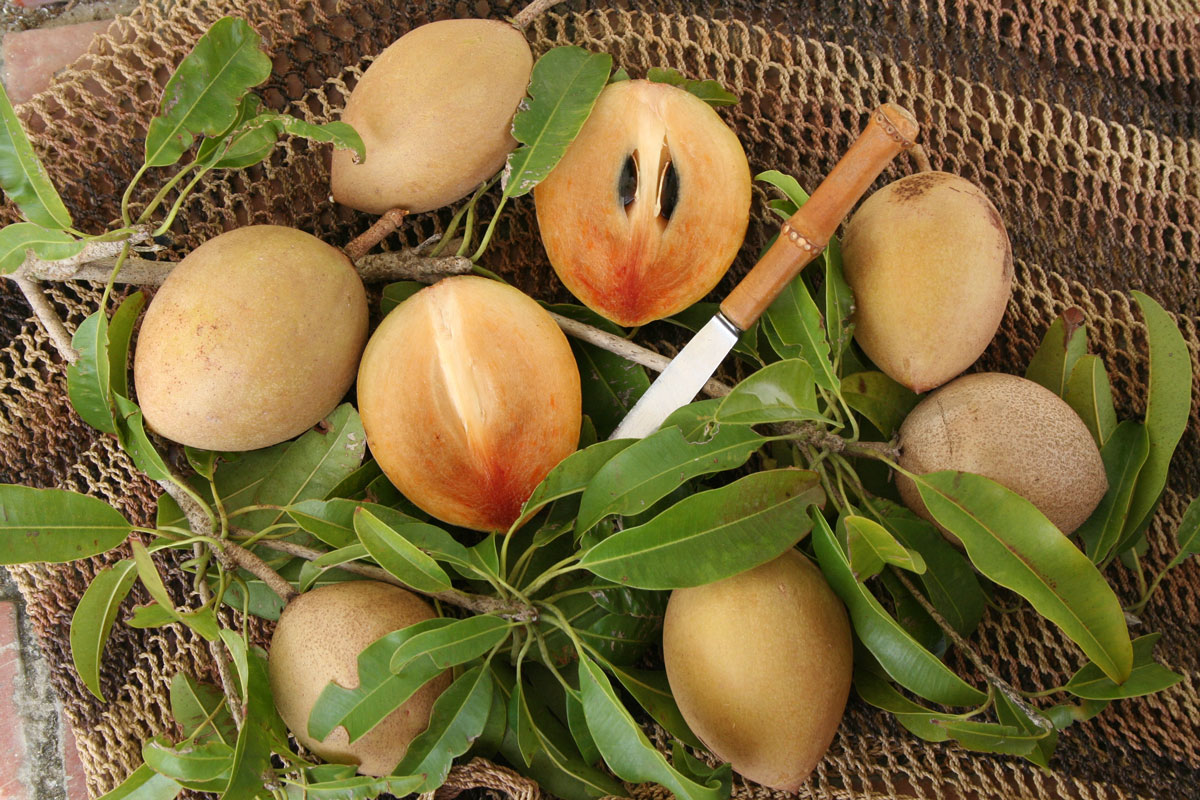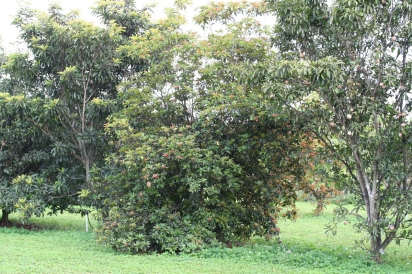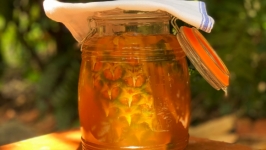Sapodilla: A True Maya Fruit
The sapodilla (Manilkara zapota) is a true Mayan fruit, native to Central America, with the greatest natural diversity found from the Pacific coast of Costa Rica and Nicaragua through the Yucatan Peninsula. When the first European landed in the Yucatan, the sapodilla was among the fruit that sustained Maya culture and civilization. The fruit were eaten by all Maya and celebrated by the elite in legend and religious ceremony. Throughout the Americas, the great Maya cities were built of stone and durable sapodilla wood. Its timbers formed the Maya ceremonial arches and the seeds were components of offerings to the gods. For the Maya, the sapodilla was more than sustainable. Its canopy protected the people, its roots lay the foundation of their civilization and its latex coursed through their veins.
Centuries ago, the sapodilla spread across the Caribbean was soon common throughout the islands. By the 1700s, the fruit was a staple of the home gardens of Nassau, Spanish Wells and the Bahamian out islands. It’s generally held that the first sapodilla came to Florida in the 1800s from the Bahamas and quickly found its home in the homesteads of the Keys. The fruit were cherished for flavor and nutrition, integral to survival in locations where outside supplies were sporadic. Of crucial importance was the salt and hurricane tolerance of the tree itself. When a tropical tempest would pass, the sapodilla would stand firm, battered and scarred, but ready to usher in a new day and food source. For the early settlers of South Florida, the sapodilla was sustainability and, ultimately, survival.
Sapodilla in Asia
While the sapodilla was becoming a sustainable crop in South Florida, it was being horticulturally transformed into something wonderfully modern in Asia. India imported the fruit and molded it into a key subsistence and cash crop for Indian farmers, creating hundreds of new cultivars and uses, and becoming the world leader in chiku (sapodilla) production. The sapodilla went to Thailand as well, where it is often called lamut. Here the sapodilla took on a long, thin character and there was much horticultural selection devoted to size control of the tree. Thanks to dedicated horticulturists in India and Thailand, the new, modern sapodilla returned to the Americas, along with the best genetic material of Central America and the Caribbean, and voilà: the sustainable, irreplaceable sapodilla was born in South Florida, emerging with modern genetics, new varieties and uses. The new cultivars, both from abroad and homegrown, offer advantages in tree size, management and fruit quality and variety. Among the common fare in some markets are some real gems. A few of my favorites are ‘Hasya’ (above) and ‘Molix’ from the Yucatan, ‘Makok’ and ‘Alano’ from Thailand and Hawaii, and ‘Tikal’ and ‘Silas Wood’ from here in South Florida. In the years to come, we should see some of the latest introductions made from Nicaragua with superior horticultural traits and novel flesh colors and flavors.
Easy to Grow
Sometimes it takes a pandemic to force us to re-evaluate our lifestyles and notions of survival and sustainability. A healthy diet of local fruit and vegetables is not only the fashionable thing to do, but it can help to save your life in a world faced with COVID-19. The sapodilla will not need pest or disease control. You can eat it out of hand. In the face of hurricanes, the sapodilla will survive. The dwarf varieties will let the winds blow above, and the larger ones will shed their branches and quickly re-grow. In our changing climate, the sapodilla will survive.
You can dehydrate the fruit or freeze it for use in ice creams. But I like my sapodilla the old-fashioned way; harvested at proper maturity, ripened up on the porch, and then chilled before eating. The fruit smell of brown sugar and the best of the cultivars can be eaten skin and all. The better cultivars have few seeds to hinder your enjoyment. But go forewarned: we are yet to have latex-free cultivars, and the consumption of an underripe fruit is not a pleasant experience. Lips will be stuck together, and facial hair compromised for quite some time. But latex won’t hurt you, and a properly ripened sapodilla will be nothing but sweet, silky enjoyment.









